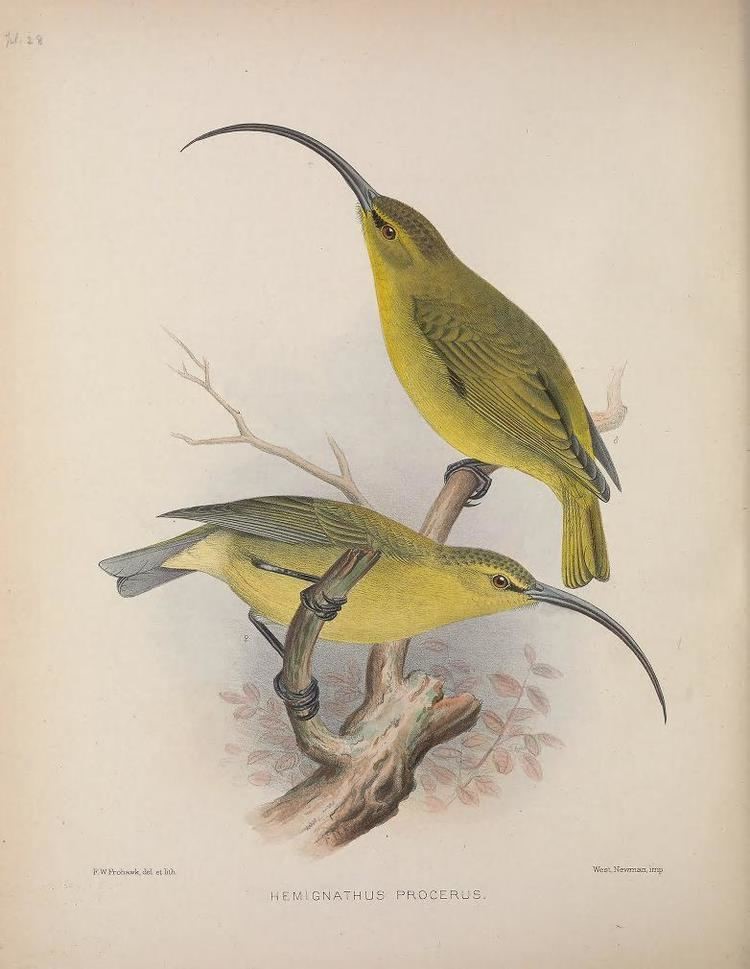Birdfinding.info ⇒ The last observation of Kauai Akialoa that is widely regarded as reliable was along the Pihea Trail at the northern end of the Alakai Swamp on April 12, 1969. The species was regarded as common across much of Kauai in the 1800s, but dwindled rapidly toward the end of that century. Many of the specimens taken in the 1890s had conspicuous lesions and tumors, apparently indicating that the species as a whole was succumbing to disease. By 1920 it had vanished from most of its range and was suspected to be extinct until 1960 when a small population was rediscovered in the Alakai Swamp, where it evidently made its last stand over the course of that decade.
Kauai Akialoa †
Akialoa stejnegeri
Extinct. Formerly endemic to Kauai.
Before its decline, in the early and mid-1800s, it was known from ohia forests throughout Kauai at elevations of around 200 to 1,300 m.
Identification
A very large honeycreeper with an extraordinarily long, scimitar-shaped bill, bright-olive upperparts, and yellow underparts.
The male was more brightly colored than the female and had a more strongly curved bill, while the female’s bill was longer—the longest bill among all the honeycreepers known to science.
Immatures were duller than adults, mostly gray above and whitish below, and had two prominent whitish wingbars.
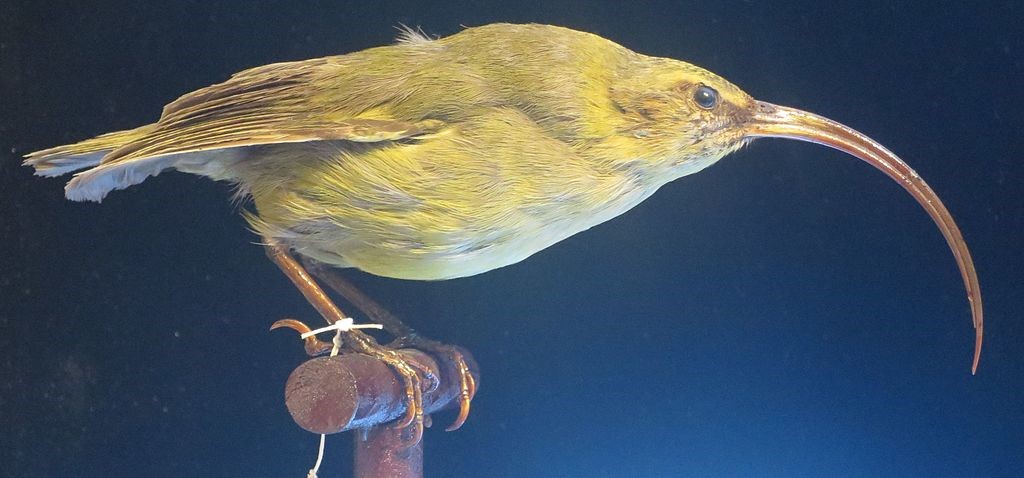
Kauai Akialoa. © Bernice Pauahi Bishop Museum
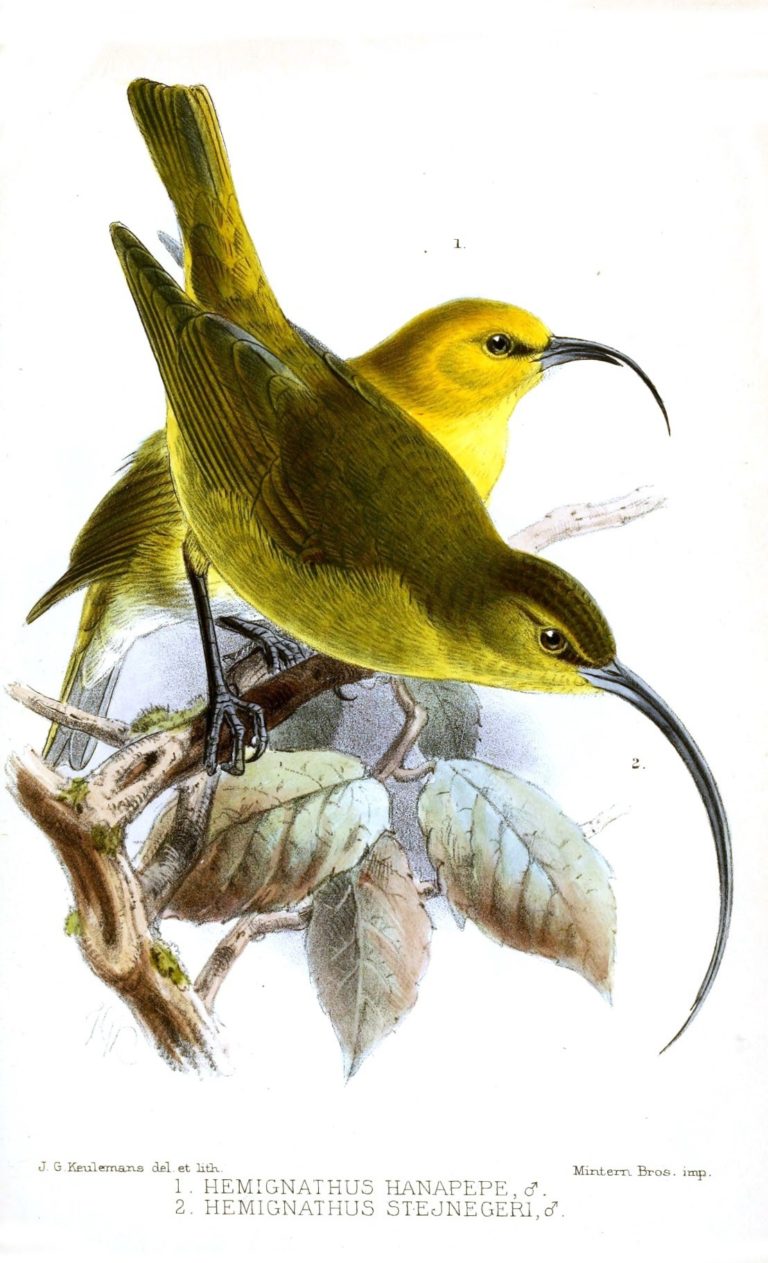
Kauai Akialoa, with Kauai Nukupu’u in background. John Gerrard Keulemans, 1890
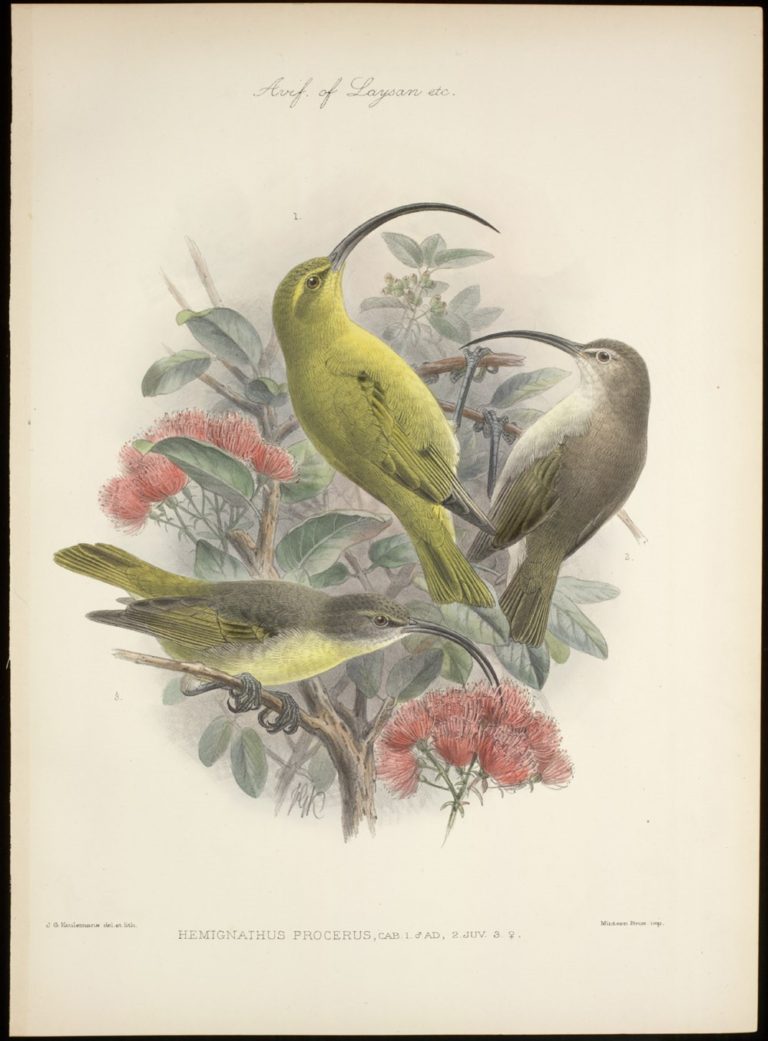
Kauai Akialoa, male, female, and immature—but note that the immature in this illustration lacks wingbars. John Gerrard Keulemans, 1900

Kauai Akialoa, male, ventral view. (Specimen ID: RMNH.AVES.110021; Kahaluamano, Kauai, Hawaii; April 1, 1895.) © Naturalis Biodiversity Center
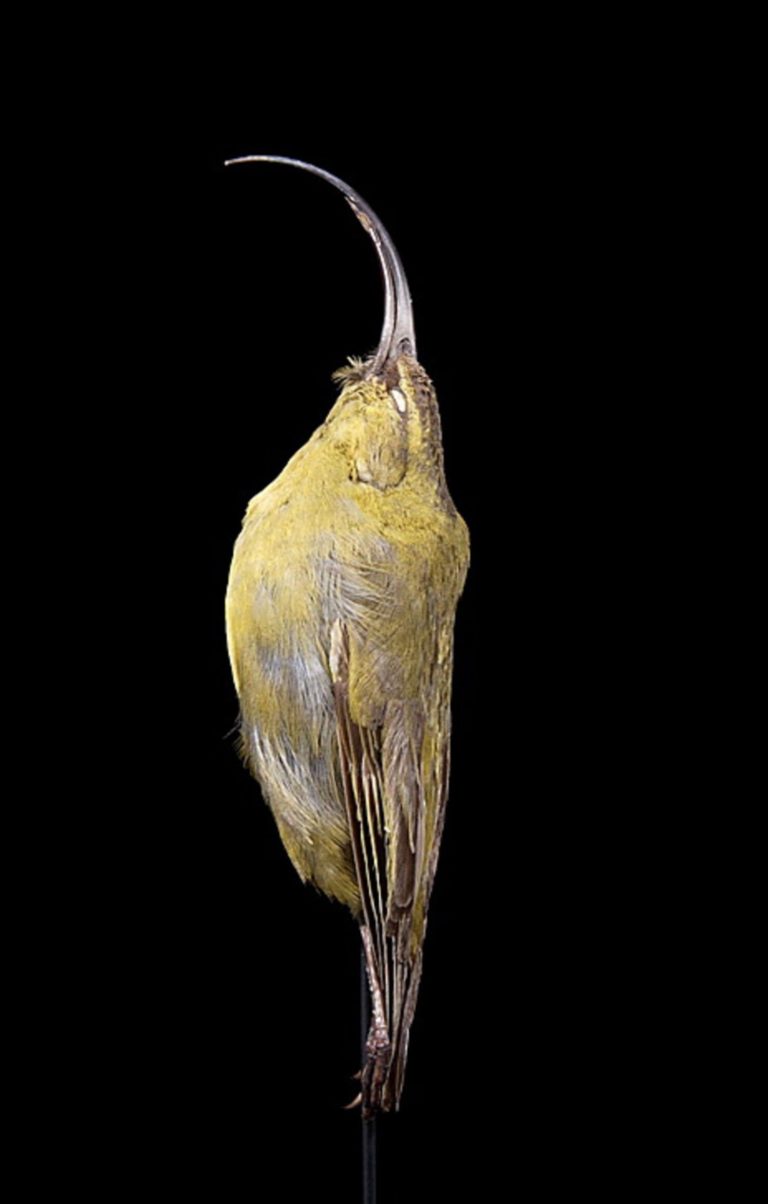
Kauai Akialoa, male, side view. (Specimen ID: RMNH.AVES.110021; Kahaluamano, Kauai, Hawaii; April 1, 1895.) © Naturalis Biodiversity Center

Kauai Akialoa, male, dorsal view. (Specimen ID: RMNH.AVES.110021; Kahaluamano, Kauai, Hawaii; April 1, 1895.) © Naturalis Biodiversity Center

Kauai Akialoa, female, ventral view. (Specimen ID: RMNH.AVES.110021; Kahaluamano, Kauai, Hawaii; October 1895.) © Naturalis Biodiversity Center

Kauai Akialoa, female, side view. (Specimen ID: RMNH.AVES.110021; Kahaluamano, Kauai, Hawaii; October 1895.) © Naturalis Biodiversity Center

Kauai Akialoa, female, dorsal view. (Specimen ID: RMNH.AVES.110021; Kahaluamano, Kauai, Hawaii; October 1895.) © Naturalis Biodiversity Center
Notes
Monotypic species. Formerly considered conspecific with Oahu, Maui Nui, and Lesser Akialoas, known collectively as the Akialoa (Hemignathus ellisianus).
References
BirdLife International. 2017. Akialoa stejnegeri (amended version of 2017 assessment). The IUCN Red List of Threatened Species 2017: e.T103823250A119550506. https://dx.doi.org/10.2305/IUCN.UK.2017-3.RLTS.T103823250A119550506.en. (Accessed May 20, 2020.)
Hume, J.P. 2017. Extinct Birds (Second Edition). Bloomsbury Publishing PLC, London.
Pratt, H.D. 2005. The Hawaiian Honeycreepers: Drepanidinae. Oxford University Press.
Pyle, R.L., and P. Pyle. 2017. The Birds of the Hawaiian Islands: Occurrence, History, Distribution, and Status. Version 2 (January 1, 2017). http://hbs.bishopmuseum.org/birds/rlp-monograph/. B.P. Bishop Museum, Honolulu, Hawaii.
